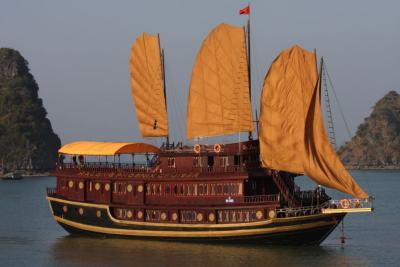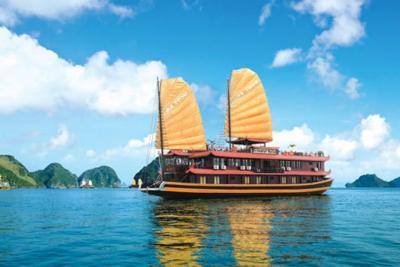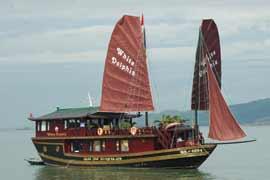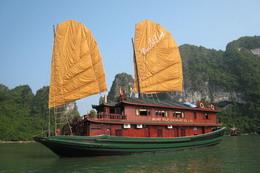| VietNamNet Bridge – “The Vietnamese Embassy in Japan must assist Vietnamese in Japan
to return home at their request.” “The Ministry of Health must prepare to check
radioactive of those who return from Japan,” etc⦠were among the Prime
Minister’s instruction made on March 16.  | | Two women covered their mouths to avoid affected
radioactivity. Photo by AFP on March 14 in Iwate northeastern province, Japan. | After listening to
reports of the Ministry of Foreign Affairs and the Vietnamese Ambassador to Japan
about the situation in there, Prime Minister Nguyen Tan Dung said that “the
situation in Japan is complicated but still under control.” The PM told the
Vietnamese Embassy in Japan
“to combine with Japanese agencies to urgently evacuate Vietnamese citizens
from the earthquake, tsunami-hit areas and the areas around the affected nuclear
power plants.” The Ministry of
Foreign Affairs is responsible to closely combine with Japanese agencies and the
Vietnamese representative body in Japan to keep track of the
situation and to apply necessary measures within it jurisdiction. The Ministry of
Information and Communications must facilitate Internet access to enable the
people to update information about quakes and tsunami in Japan. The PM instructed
the Ministry of Health “to prepare to send relief doctors to Japan and to check radioactivity of the
Vietnamese citizens in Japan
and combine with relevant agencies to cope with radioactive dust.” There are more than
30,000 Vietnamese in Japan,
including 18,000 workers. The Ministry of Labor, War Invalids and Social
Affairs said “that among Vietnamese workers in Fukushima, nobody works within 30km of
diameter from the nuclear power plant. This diameter is said to be safe by the
Japanese government.” However, these
workers have been evacuated far from the plant. Specifically, 17 workers at Daiei
Hosei and Canyon factories have been moved to factories in Gunma (near Tokyo). Two workers who
work 60km from the nuclear power plant have been also evacuated. For the ten workers
who work in areas far from the sea and nuclear power plants, the board to
manage Vietnamese workers in Japan
has asked labor exporting firms to update them with information in Japan
and timely evacuate them in necessary cases. On March 16, three
mission groups from the Vietnamese Embassy in Japan visited disaster-stricken locations
and picked up 82 Vietnamese to safety. Of these, 64 were taken back to Tokyo. The first group
went to Sendai City
in Miyagi Province, one of the nine areas most
damaged by the earthquake and tsunami on March 11. They found 41 Vietnamese
citizens and one German, and took them to a pagoda in Tokyo. The second group
arrived in Morioka City, in Iwate
Province and picked up 23
Vietnamese, most of whom are students. This group is expected to arrive in Tokyo tonight. The third group,18
Vietnamese found in the Fukushima
Province, are trying to
get in touch with all Vietnamese students there to take them out of the
province. The same day,
Vietnam Airlines also started using Boeing 777 planes in flights from Japan’s Narita
International Airport
to Hanoi and Ho Chi Minh City in order to accommodate
those who want to go home. The Vietnam Red
Cross (VRC) on March 16 received a US$10,000 donation from the Vietnam Post and
Telecom Group (VNPT) and the Vietnam Post Trade Union to support Japanese
victims. VRC has already
donated US$50,000 and hopes to raise more funds for earthquake and tsunami
victims in Japan.
The campaign to raise donations will last from March 15 to April 15. VRC is coordinating
with the International Red Cross Committee and the Japan Red Cross to provide
Vietnamese of any information about their relatives living in Japan and also help Vietnamese living in Japan to contact their families back home in Vietnam. All Vietnamese
people who want to seek information about their relatives in Japan can
contact Mrs. Tran Thi Quy, Department for Search for Relatives Information,
Board for Social Work and Disaster Management, Vietnam Red Cross Society. Tel:
043 8224030/127 - Fax: 043 9424285 or email: . Japanese embassy in Vietnam opens
funeral book The Japanese
embassy in Hanoi is opening a funeral book for
Vietnamese individuals and organizations to commemorate numerous perished
victims in the devastating earthquake and huge tsunami that hit northwestern Japan on March
11. Local people can
offer their condolences to the victims or put garlands at the embassy’s
premises provided that they inform their intention to the security guards
first. The embassy is
scheduled to welcome guests from March 17-18 and from March 21-23 (10:00-12:00
am; 13:00-16:00 pm). The embassy will
close its funeral book on March 21 (Japanese holiday). Although the
Japanese Consulate doesn’t welcome guests on that holiday but it’s ready to
greet people who want to share this pain with the Japanese. Timeline of quake and tsunami
disaster in Japan: March 11 afternoon: Earthquake of 9.0 Ricter scales was
reported offshore Miyagi province in northeastern Japan. The quake hit a vast area,
including Tokyo,
destroyed many houses and facilities and harmed some nuclear power plants. At the same time,
tsunamis rushed down provinces in northeastern Japan. The worst hit provinces
include Iwate, Miyagy and Fukushima.
Tsunami swept away many cities and villages to the sea. Up to 9,500 people in a
town were reported missing. March 12 afternoon: The first explosion occurred at the Fukushima 1 nuclear power
plant. March 14 morning:
The second explosion occurred at the Fukushima
1 nuclear power plant. Nearly 200,000 people were ordered to evacuate to avoid
radioactivity. March 15 morning: The third explosion occurred at the Fukushima 1 nuclear power
plant. At the same time,
more than 2,000 bodies drifted to the coast of Miyagi.
The total number of victims was reported to be 1,800 but the local media
estimated that the figure is over 10,000. March 15 afternoon: quakes were reported offshore Fukushima and southwestern Tokyo. The police still estimated over 10,000
dead. The number of dead was officially confirmed at over 3,000. March 16 morning: Fires broke out at reactor No. 4 while
white smoke went up from reactor No. 3 at Fukushima
1. PV | 












